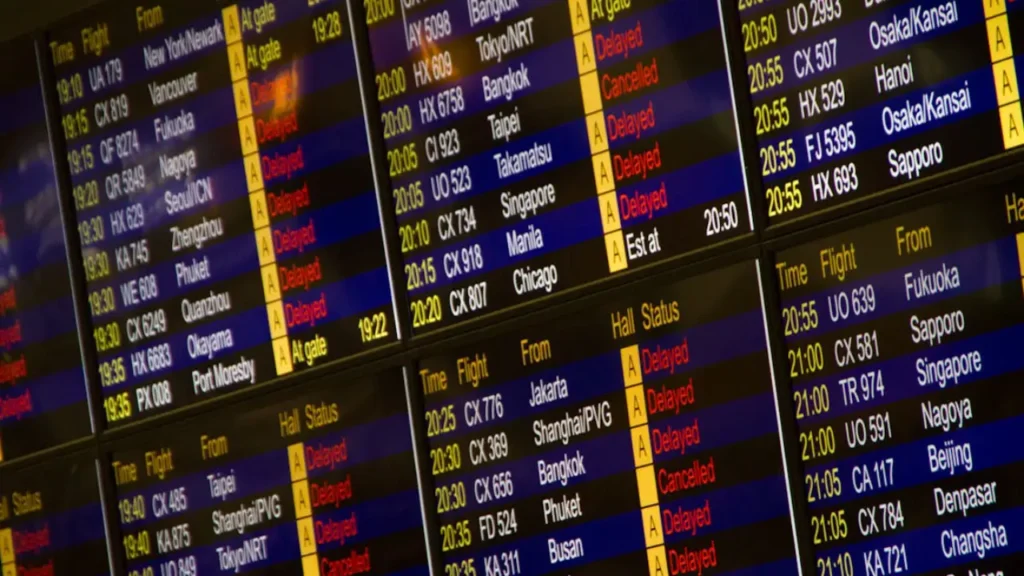How Airlines Schedule Flights & Which Factors are Considered?

On a regular basis, airlines use certain software and intricate matrixes to schedule their flights. Airline Schedule Planning and Flight Schedule Planning are some matrixes or software they rely on. Airlines schedule flights by exercising the software as well as by taking into consideration a few factors. Accordingly, they enter past data for specific dates for each distinct route to fly on. Depending on the impact of these factors, the schedules may undergo modifications. In accordance with the same, information is shared with passengers regarding flights being on time, delayed, or cancelled.
How do Airlines Schedule Flights on a Regular Basis?
Airlines schedule flights by employing a matrix known as “Airline Scheduled Planning”. For utilizing this, they input historical data regarding certain terms for every district route on a given day. After analyzing these terms, the software recommends an accurate flying schedule.
A few of these terms are provided below:
- Departure Time
The departure time is when a flier’s flight will depart from the boarding gates at the designated time.
- Arrival time:
Essentially, the arrival time is when aircraft arrive at the boarding gates. This is different from the runway landing time.
- Block Time:
The interval between the arrival and departure times is known as the block time.
Which Factors Matter to Airlines for Flight Scheduling?
While scheduling flights, airlines consider certain factors, including the timing of connecting flights. By estimating the time when the connecting aircraft will arrive at the other airport, airlines ascertain the departure times of their trips.
More factors that are considered while scheduling flights are:
- Airport
An airline’s scheduled flight is impacted by airport passenger volume. In order to maintain the same, some airports provide carriers with a window of 30 to 60 minutes to operate flights.
- Also, for this, some aspects of the airport’s infrastructure are taken into account, such as:
- Number of boarding gates
- Active runways
- The presence of the airport’s current scenarios
- Return or Turnaround Time
A carrier’s return or turnaround time is the duration needed to unload an aircraft upon arrival and get it ready for takeoff again.
The time spent in changing the crew is included in this duration. Further, airlines need to confirm whether or not the replacement crew is arriving at the airport. Accordingly, a specific carrier can plan for further flights.
- Flight Path
How crowded a route is, as well as the length of a flight in the air, on that specific path, are additional factors that go into air travel scheduling. Further, on popular routes, operators can decide to run flights during less crowded times of the day/week.
- Itinerary/Brand Value
A flight’s itinerary is determined by an airline’s brand value in the marketplace. In accordance with the same, airlines try to schedule flights to avoid airport traffic jams and attract more passengers.
- Destination Type
Operators try to manage their flight schedules according to the reason passengers are traveling to particular locations. In this regard, they arrange flights from vacation spots for late morning or afternoon. This is because they want fliers to get the most out of their downtime.
- Unexpected Circumstances
The Schedule Planning Team of an airline determines flight schedules several months in advance. However, unforeseen circumstances, such as inclement weather or runway construction, may occur within that period. The same can impact a flight’s scheduled time for arrival/departure.
For this reason, a majority of airlines either use a separate team of workers or employ flight dispatchers who work out of the system operations center. Their primary responsibility is to modify schedules to reflect unforeseen developments in real-time.
Closing Remarks,
Frequently, airlines schedule multiple flights with the help of certain software. With this software, the arrival, departure, and block time can be decided. However, while scheduling the same, certain factors are considered. Depending on their impact, further modifications can be made to finalize the schedule.